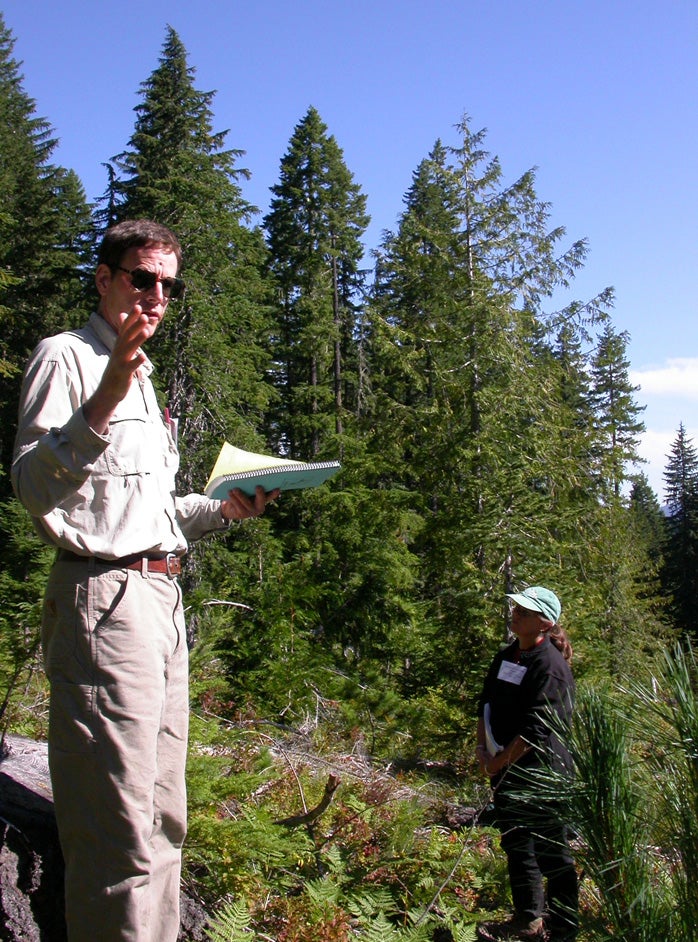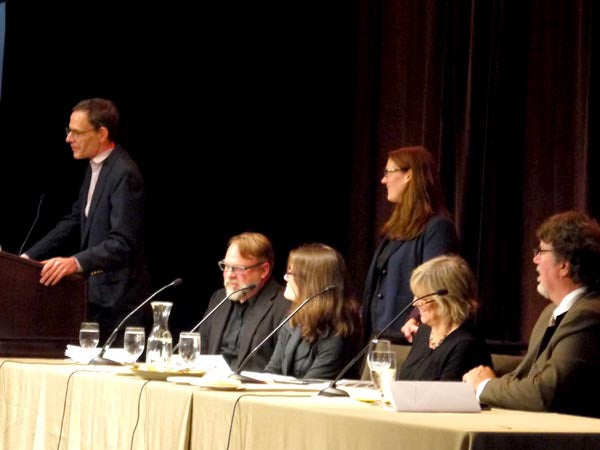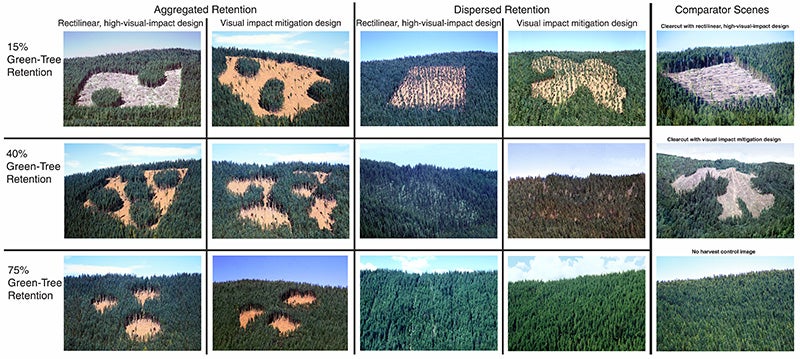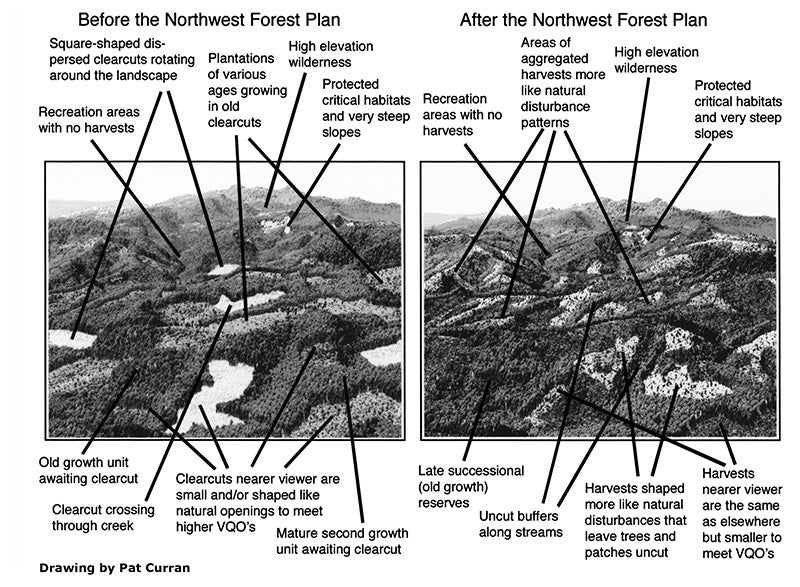Professor Rob Ribe of the Department of Landscape Architecture has been selected for a 2013 Oregon ASLA (American Society of Landscape Architects) research and communication honor award for his rigorous, peer-reviewed studies assessing how to design for and improve the scenic quality of harvests in Pacific Northwest federal forests.
The study’s final summary report, “Public Perceptions of West-side Forests: Improving Visual Impact Assessments and Designing Thinnings and Harvests for Scenic Integrity,” was recently published by the U.S. Forest Service Pacific Northwest Research Station covering public perception surveys and photographic inventories over twenty years.
Ribe's study is the first to use public perceptions to derive guidelines that relate forest structure and harvest design data to the Forest Service’s scenic integrity standards.


Above: (left) Professor Rob Ribe in the field. (right) Ribe accepts the ASLA Oregon Chapter in November in Portland.
Ribe was contracted by in 1993 by the Forest Service to evaluate criteria for and develop management guidelines to achieve more scenically beautiful and socially acceptable harvest designs in different landscape contexts. National Forests are required to meet scenic integrity standards, and in doing so have faced new challenges under the Northwest Forest Plan. However few harvests have the benefit of design guidance by a staff landscape architect. Ribe’s findings were to provide such guidance.
Ribe’s project provides guidelines for timber harvests that also seek to better maintain ecological functions in complex ways. The guidelines apply to harvests seen both in vista views and from inside forests, and will aid forest plans covering large and small landscapes.
“Often, environmental impact assessments are made only for large-scale forest plans and programs, rather than for individual projects,” Ribe’s narrative states. “Many timber projects (may) go forward with little further concern for scenic values or involvement by landscape architects or outdoor recreation planners.”
Ribe’s project provides evidence-based design guidelines to achieve improved scenic quality. The findings compared perceptions of beauty and acceptability among people with different ideological attitudes toward timber harvests and forest management. Peer-reviewed and rigorous psychometric methods were employed to produce six journal articles and the summary report.
The findings describe the preferred density and size of trees to be retained “to achieve scenic integrity standards” under the agency’s Scenery Management System. The findings are “directly and easily useful to agency professionals” and also “[inform] how scenic impact levels affect public perceptions of forests’ acceptability when people are informed about harvest goals.”
The project scope included taking thousands of field photographs in national and state forest lands in western Oregon and Washington and conducting “vista-view” and “in-stand view” surveys, which were mailed to individuals or presented in public workshops. More than a thousand people were asked to rate the photos for “scenic beauty or acceptability.” More than 200 students and forty agency and university scientists assisted.
“The ratings were averaged using psychometric methods and correlated to attributes of the landscapes depicted using regression analysis and analysis of variance,” Ribe’s report states. “The average ratings were rescaled to Forest Service scenic integrity levels and the forest conditions that tended, on average, to achieve those integrity levels were identified.”
The resulting scenic integrity guidelines will aid landscape architects and forest planners in making visual impact assessments for future projects that will “be seen by people seeking beautiful recreation settings or otherwise perceiving the quality and acceptability of the agency’s forest stewardship,” the report states.
Ribe’s summary report was included in “Density Management in the 21st Century: West Side Story,” a report published by the U.S. Forest Service Pacific Northwest Research Station in August 2013.
The awards were presented at the ASLA Oregon Chapter design awards presentation on November 1 in Portland.
Ribe also coauthored an article recently in the Proceedings of the National Academy of Sciences.

Click image above to view larger image

